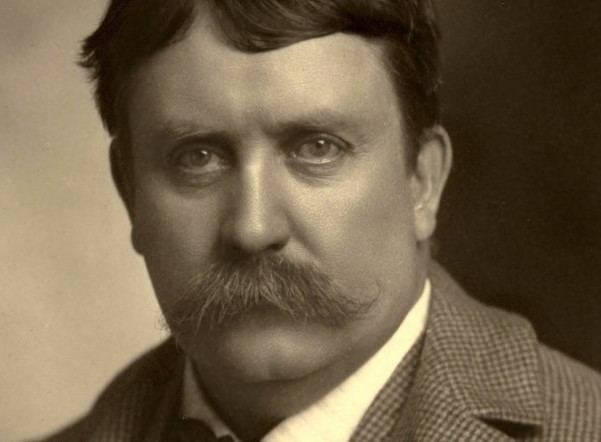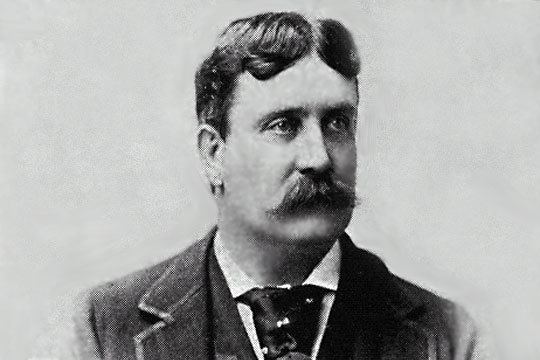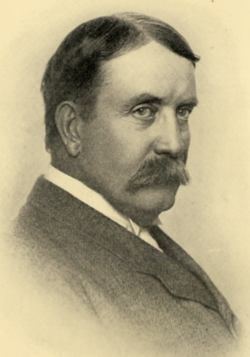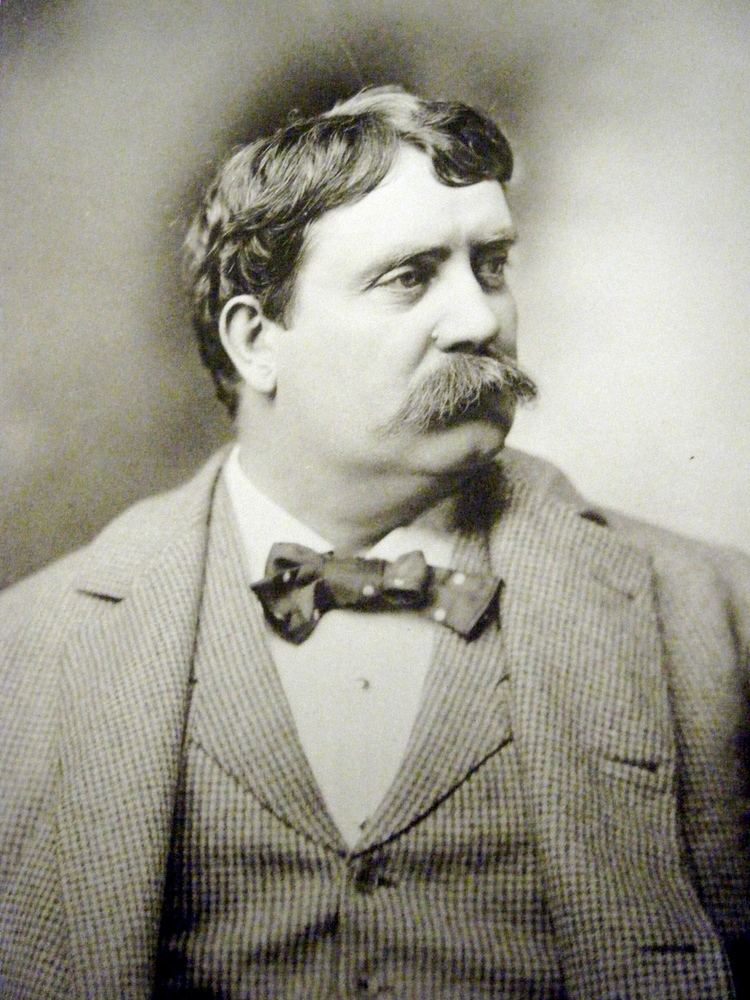Nationality American Role Architect Name Daniel Burnham | Occupation Architect | |
 | ||
Books Plan of Chicago, Plan of Chicago: Limited Edition Clothbound, Plan of Chicago - Scholar's Choice Edition Structures Similar People | ||
Make no little plans daniel burnham and the american city
Daniel Hudson Burnham, FAIA (September 4, 1846 – June 1, 1912) was an American architect and urban designer. He was the Director of Works for the World's Columbian Exposition in Chicago.
Contents
- Make no little plans daniel burnham and the american city
- Daniel burnham forum on big ideas the next 50 planning architecture and landscape architecture
- Early life
- Career
- Worlds Columbian Exposition
- City planning and The Plan of Chicago
- Influence
- Death
- Memorials
- Philippines
- Chicago
- Detroit
- Pittsburgh
- Washington DC
- Cincinnati
- Others
- In popular culture
- References

Burnham took a leading role in the creation of master plans for the development of a number of cities, including Chicago, Manila and downtown Washington, D.C. He also designed several famous buildings, including the Flatiron Building of triangular shape in New York City, Union Station in Washington D.C., the Continental Trust Company Building tower skyscraper in Baltimore (now One South Calvert Building), and a number of notable skyscrapers in Chicago.

Daniel burnham forum on big ideas the next 50 planning architecture and landscape architecture
Early life

Burnham was born in Henderson, New York and raised in the teachings of the Swedenborgian called The New Church, which ingrained in him the strong belief that man should strive to be of service to others. At the age of eight Burnham moved to Chicago, Illinois.

After failing admissions tests for both Harvard and Yale and an unsuccessful stint at politics, Burnham apprenticed as a draftsman under William LeBaron Jenney.
Career
At age 26, Burnham moved on to the Chicago offices of Carter, Drake, and Wight, where he met future business partner John Wellborn Root (1850–1891).
Burnham and Root were the architects of one of the first American skyscrapers: the Masonic Temple Building in Chicago. Measuring 21 stories and 302 feet, the temple held claims as the tallest building of its time, but was torn down in 1939. Under the design influence of Root, the firm had produced modern buildings as part of the Chicago School. Following Root’s premature death from pneumonia in 1891, the firm became known as D.H. Burnham & Company.
World's Columbian Exposition
Burnham and Root had accepted responsibility to oversee design and construction of the World's Columbian Exposition in Chicago’s then-desolate Jackson Park on the south lakefront. The largest world's fair to that date (1893), it celebrated the 400-year anniversary of Christopher Columbus' famous voyage. After Root's sudden and unexpected death, a team of distinguished American architects and landscape architects, including Burnham, Frederick Law Olmsted, Charles McKim and Louis Sullivan, radically changed Root's modern and colorful style to a Classical Revival style. Under Burnham's direction, the construction of the Fair overcame huge financial and logistical hurdles, including a worldwide financial panic and an extremely tight timeframe, to open on time.
Considered the first example of a comprehensive planning document in the nation, the fairground was complete with grand boulevards, classical building facades, and lush gardens. Often called the "White City", it popularized neoclassical architecture in a monumental and rational Beaux-Arts plan. The remaining population of architects in the U.S. were soon asked by clients to incorporate similar elements into their designs.
City planning and "The Plan of Chicago"
Initiated in 1906 and published in 1909, Burnham and his co-author Edward H. Bennett prepared "The Plan of Chicago", which laid out plans for the future of the city. It was the first comprehensive plan for the controlled growth of an American city, and an outgrowth of the City Beautiful movement. The plan included ambitious proposals for the lakefront and river and declared that every citizen should be within walking distance of a park. Sponsored by the Commercial Club of Chicago, Burnham donated his services in hopes of furthering his own cause.
Plans and conceptual designs of the south lakefront from the Exposition came in handy, as he envisioned Chicago being a "Paris on the Prairie". French-inspired public works constructions, fountains, and boulevards radiating from a central, domed municipal palace became Chicago's new backdrop. Though only parts of the plan were actually implemented, it set the standard for urban design, anticipating future need to control unexpected urban growth, and continued to influence the development of Chicago long after Burnham's death.
City planning projects did not stop at Chicago though. Burnham had previously contributed to plans for cities such as Cleveland (the 1903 Group Plan), San Francisco (1905), and Manila (1905) and Baguio in the Philippines, details of which appear in "The Chicago Plan" publication of 1909. His plans for the redesign of San Francisco were delivered to the Board of Supervisors in September 1905, but in the haste to rebuild the city after the 1906 earthquake and fires, the plans were ultimately ignored. The Plan for Manila never fully materialized due to the breaking out of World War II and relocating the capital to another city after the war. Components of the plan which came into fruition include the shore road, which became Dewey boulevard (now known as Roxas boulevard) and various neo-classical government buildings around Luneta Park, which very much resembles a mini version of Washington D.C.
In Washington, D.C., Burnham did much to shape the 1901 McMillan Plan, which led to the completion of the overall design of the National Mall. The Senate Park Commission, or McMillan Commission, established by Michigan Senator James McMillan, brought together Burnham and three of his colleagues from the World's Columbian Exposition—architect Charles Follen McKim, landscape architect Frederick Law Olmsted Jr., and sculptor Augustus Saint-Gaudens. Going well beyond Pierre L'Enfant's original vision for the city, the plan provided for the extension of the Mall beyond the Washington Monument to a new Lincoln Memorial and a "pantheon" that eventually materialized as the Jefferson Memorial. This plan involved significant reclamation of land from swamp and the Potomac River, and the relocation of an existing railroad station on the site, which was replaced by Burnham's own design for Union Station. As a result of his service on the McMillan Commission, in 1910 Burnham was appointed a member and the first chairman of the United States Commission of Fine Arts, helping to assure the implementation of the McMillan Plan's vision. Burnham served on the commission until his death in 1912.
Influence
Much of his work was based on the classical style of Greece and Rome. In his 1924 autobiography, Louis Sullivan, one of the leading architects from the Chicago School but one who had enjoyed difficult relations with Burnham over an extended period of time, criticised Burnham for what Sullivan viewed as his lack of original expression and dependence on Classicism. Sullivan went on to claim that "the damage wrought by the World's Fair will last for half a century from its date, if not longer"—a sentiment edged with bitterness, as corporate America of the early 20th century had demonstrated a strong preference for Burnham's architectural style over Sullivan's.
Burnham is famously quoted as saying, "Make no little plans. They have no magic to stir men's blood and probably will not themselves be realized." This slogan has been taken to capture the essence of Burnham's spirit.
A man of influence, Burnham was considered the preeminent architect in America at the start of the 20th century. He held many positions during his lifetime, including the presidency of the American Institute of Architects. Other notable architects began their careers under his aegis, such as Joseph W. McCarthy.
Death
In 1912, when he died in Heidelberg, Germany, D.H. Burnham and Co. was the world's largest architectural firm. Even legendary architect Frank Lloyd Wright, although strongly critical of Burnham's Beaux Arts European influences still admired him as a man, eulogized: "(Burnham) made masterful use of the methods and men of his time... (as) an enthusiastic promoter of great construction enterprises... his powerful personality was supreme." The successor firm to Burnham's practice was Graham, Anderson, Probst & White, which continued in some form until 2006. Burnham was buried in Graceland Cemetery in Chicago.
Memorials
Tributes to Burnham include Burnham Park and Daniel Burnham Court in Chicago, Burnham Park in Baguio City in the Philippines, Daniel Burnham Court in San Francisco (formerly Hemlock Street between Van Ness Avenue and Franklin Street), the annual Daniel Burnham Award for a Comprehensive Plan (run by the American Planning Association), and the Burnham Memorial Competition held in 2009 to create a memorial to Burnham and his Plan of Chicago. Collections of Burnham's personal and professional papers, photographs, and other archival materials are held by the Ryerson & Burnham Libraries at the Art Institute of Chicago.
